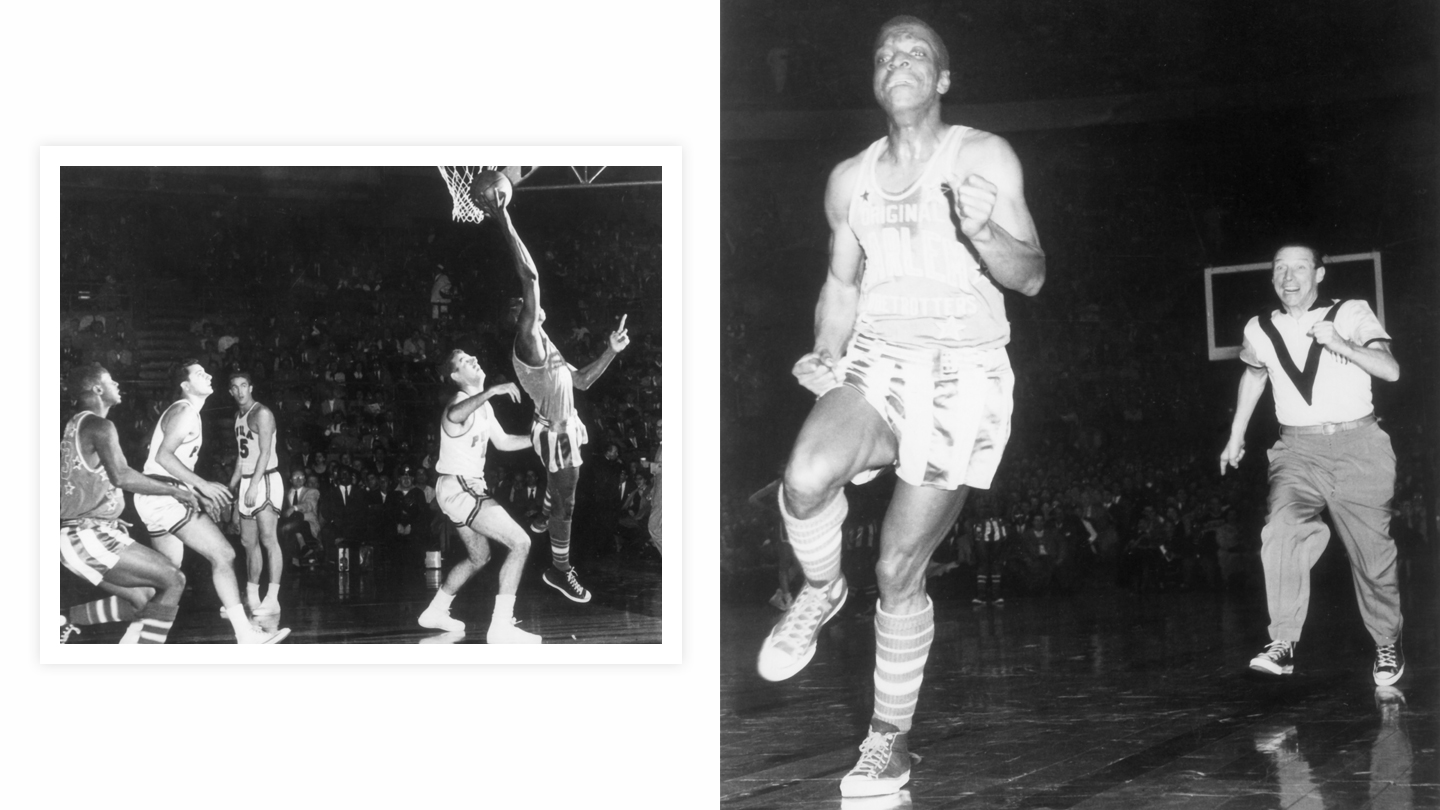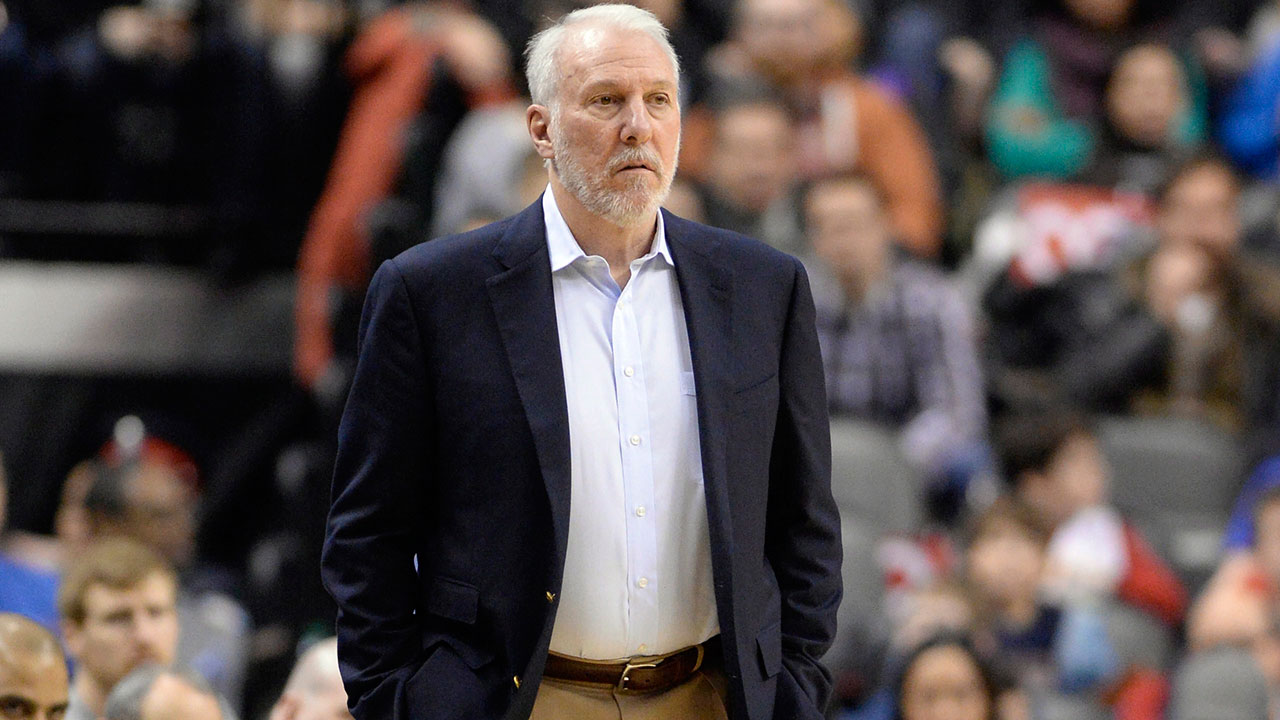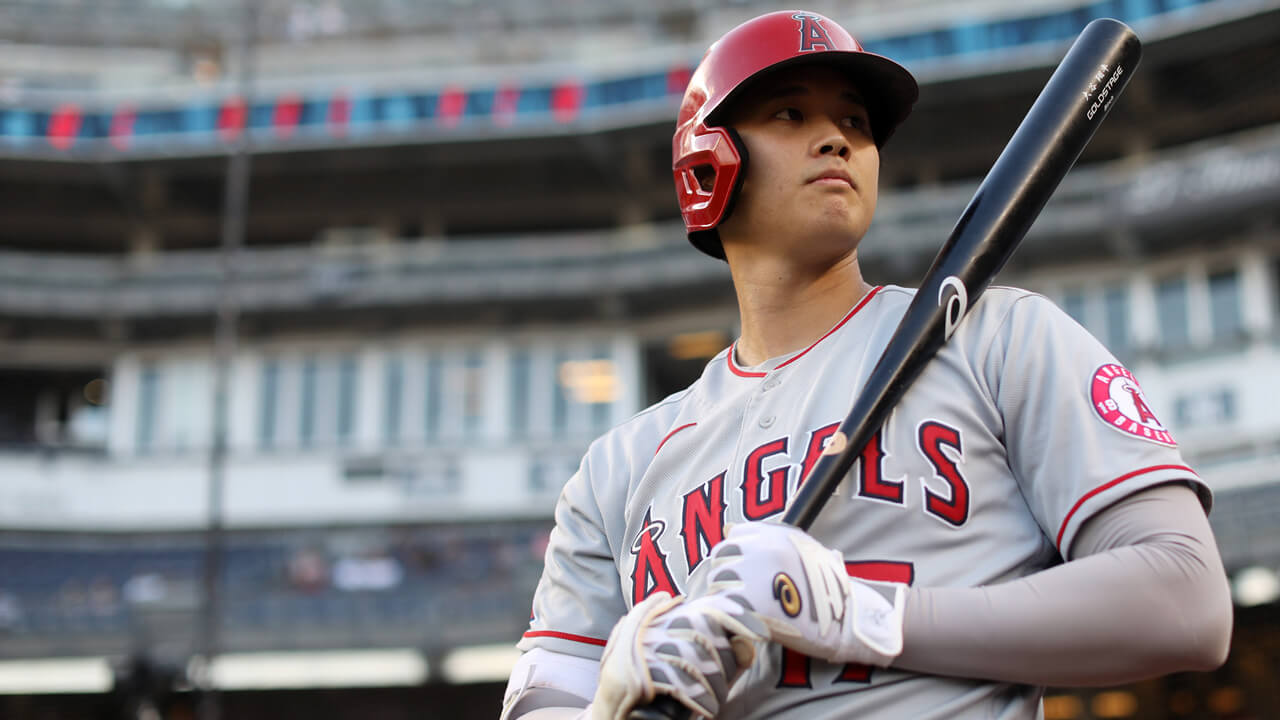Throughout Black History Month, Sportsnet will release weekly features examining sport’s connection to black communities in Canada, and celebrating the lives and accomplishments of black athletes, coaches and executives.
August 22, 1951. East Berlin.
The CIA had been aware of the event for months. Two hundred thousand kids from cities and towns across the Soviet Union descending on East Berlin. The World Youth Festival, a Communist Woodstock for teens set against the backdrop of post-War Germany. Memos circulated in Washington had warned that the Festival was “financed by the Soviet Zone Government.” It would be one big propaganda push, a massive platform from which to drop rhetorical bombs on Western ideals. Nearly a quarter-million young minds bombarded with tales of the worst America had to offer, and a chief source of—justified but still unwelcome—criticism would focus on the U.S.’s horrifying treatment of African-Americans, both past and present.
August 22, 1951. West Berlin.
Another event that had been on the Agency’s radar for a while. A crowd of 76,000 gathering in the stands of the Olympic Stadium, one of the few pre-War structures to survive Allied bombing. A fleet of helicopters landing in the infield and spilling crews of American soldiers from their bellies. The men setting to work, unloading sheets of plywood to build a basketball court on the grass. Preparation for one big propaganda pushback.
The U.S. government had employed all sorts of tactics and tools in its Cold War fight against anti-American sentiment. On this day, Jesse Owens would follow the soldiers out of a chopper, the latest in a long line of entertainers and athletes tapped to generate goodwill for his country. He would hit the field to a hero’s welcome and run a ceremonial lap of the track where he’d won four gold medals at the 1936 Berlin Games—Hitler’s Olympics—an unspoken argument to all in attendance that America wasn’t a terrible place to live if you were black. The crowd would roar, hopefully loud enough to be heard by the kids gathered on the other side of the city. But Owens was merely a set-up man. As its primary weapon of choice in a PR offensive meant to combat one of the largest pro-Communist gatherings in history America had chosen a travelling group of basketball icons, the Harlem Globetrotters.
That the Globetrotters, an all-black team known as much for its lighthearted comedic stylings as its athletic prowess, would be tasked with fighting Communism and spreading the image of America as a race-blind Utopia was surprising and problematic. But race and prejudice had played an unavoidable role in the team’s identity since it was first formed in the segregated America of 1926.
In those early days, the Globetrotters would arrive in new cities to headlines like “Coloured Five will take on Shelby Stars,” and for decades they played double-headers in front of separate white and black audiences. They weren’t the first all-black travelling team and, initially, they weren’t the best (that distinction went to the Harlem Renaissance, from whom the Chicago-founded Globetrotters stole part of their name), but before long the Globetrotters were certainly the most popular.
That rise came soon after the team was purchased by Abe Saperstein, a London-born and Chicago-raised booking agent with a nose for publicity that would have made P.T. Barnum jealous. Saperstein recognized his players’ superb skills and creative talents, and by the late ’30s he’d transformed them from a travelling team into a travelling show—incorporating choreographed gags and tricks, like no-look passes or putting the ball behind a defender’s head. By the mid-’40s, the Globetrotters were playing more and more to white audiences, who showed up in droves to watch Marques Haynes’s dribbling wizardry or the comedic stylings of “Goose” Tatum, a former Negro League baseball player who seemingly held the ball on a string.
Often suiting up for exhibitions against the all-white teams of the NBL, a precursor to the NBA, the Globetrotters were always the bigger draw. Fans would fill the seats in Madison Square Garden to watch them take on the NBL’s New York Knicks and, invariably, the stands would empty out prior to the day’s Trotter-less second matchup. It wasn’t long before the team was always scheduled for the nightcap.
Yet when they travelled through America, the joy they brought the paying public never seemed to matter as much as the colour of their skin. Globetrotters players were spat at on the street and refused service in stores and restaurants. And things weren’t always all that much better on the court. During the World Professional Basketball Tournament in Illinois in 1944, for example, the Globetrotters gained a comfortable lead in a matchup against the NBL’s Oshkosh All-Stars, who had won the tourney two years earlier. Unable to close the gap, the All-Stars began throwing punches and elbows at the Harlem players. Some fans even rushed the court and joined in on the assault, which The Chicago Defender later called a “battle royal.”
Despite routinely besting their all-white opponents, the Globetrotters, like African-American basketballers in general, also had to fight the perception that they weren’t serious athletes. “I heard [sentiments] like, ‘Blacks can’t play point guard because they can’t think and they can’t lead. Blacks are good for rebounding and hard work, but you can’t really trust them on the floor because they can’t think through the complex plays in the NBA,’” says Globetrotters alum Mannie Jackson, who purchased the team in 1992. “It was characteristic of the stupidity of bias and racism and prejudice that created these norms that made no sense at all.”

Those stereotypes are faced by black athletes to this day, but the Globetrotters struck one of the first blows against them to receive mainstream press coverage in a pair of games against the champion Minneapolis Lakers of the NBL. Built around star big man George Mikan, the Lakers were considered by fans and media to be the most formidable basketball team around, and a record 17,823 people packed Chicago Stadium for the two teams’ much-anticipated 1948 exhibition match.
The game was played in a climate of extreme racial tension. In the days leading up to it, six white men had beaten a black teenager to death with a baseball bat. Police had yet to make any arrests in the case. And on the night of the game, President Harry S. Truman delivered a landmark speech promoting racial equality and against segregation and prejudice.
The Lakers and their plodding brand of ball jumped out to an early lead at Chicago Stadium and by halftime held a comfortable 10-point margin. The second half was a different story. On defence, the Globetrotters matched their opponents’ physicality. They double-teamed Mikan in the post and held the future Hall of Famer to just six second-half points. On the other side of the ball, they used the fastbreak to put up points in bunches. With the game tied as the clock ran down in the fourth, Haynes dribbled the ball for what seemed like hours (the shot clock had yet to be introduced) before delivering a pass to Elmer Robinson, who swished it as the buzzer sounded. In one of the most important games ever played, the Globetrotters pulled off 61-59 upset. They had beaten the best white team in America and done so without any “tricks.”
“That was like Joe Louis defeating Max Schmeling—this triumphant event,” says Globetrotters historian Ben Green. “They were celebrating in the streets on Chicago’s South Side. This black team that was viewed as a bunch of clowns beat the best basketball team in the world.”
A rematch the following year set a new attendance record of more than 20,000 and the Globetrotters received national press when they won a second time. The victories made clear to team owners that the new, all-white National Basketball Association couldn’t possibly claim to feature the best players in the country while barring African-Americans from its rosters. The league may have been on its way toward integration already, but those Lakers losses saw the process fast-tracked like a kid reading Proust in kindergarten. Within a year, the NBA’s first African-American players were signed, including Nat “Sweetwater” Clifton, a key member of the Globetrotters teams that edged the Lakers.
Despite that success and the team’s growing stature, perception of the Globetrotters within the African-American community remained complicated at best. Some people admired the players’ access to luxuries like travel. Others enjoyed the routine embarrassment of white opponents. (“To see them play against a white team—and make fun of them—was a source of great satisfaction to a lot of black folks,” says Jackson.) But many more—including other all-black teams—viewed the Globetrotters’ brand of basketball and their perceived willingness to cater to white audiences as exploitative.
“There was a running war of words between the Rens and the Globetrotters because the Rens said ‘They are a bunch of Uncle Toms,’” explains Green. “There were times in the ’30s that Abe had the players throwing dice on the floor, shooting craps to play up those stereotypes.”
Such Saperstein-inspired antics led to the widespread belief that they were perpetuating stereotypes instead of breaking them. To many, even among the players themselves, Saperstein’s Globetrotters brought to mind travelling minstrel shows.

In 1950, still riding the wave created by the Globetrotters’ wins over the Lakers, Saperstein took their act to Europe, bringing the players—and the team bus—across the Atlantic by boat. The trip was a massive success. And the U.S. government took notice.
Owens wasn’t the first prominent African-American the State Department had sent overseas as a means of diffusing Soviet attacks on American race relations. Jazz icon Dizzy Gillespie had served a tour; as had champion high-jumper Gilbert Cruter and others. And in the Globetrotters, the government saw a golden opportunity.
In an airgram to the State Department, Secretary of State Dean Acheson wrote: “The Department has been following the progress of Harlem Globetrotters (Negro basketballers) and recognizes their value as ambassadors of goodwill, particularly in countries that are critical of U.S. treatment of Negroes.”
Unbeknownst to his players, Saperstein was approached by representatives of the State Department about a 1951 tour that would expand on the previous year’s trip to Europe to include nations with Communist ties in South America. It would end in West Berlin on the day of the World Youth Festival. In exchange for the government helping to secure press coverage, face time with world leaders and top-shelf accommodations, the Globetrotters—decked out in their red-white-and-blue uniforms—would push a false narrative on the state of racial equality in America. “They [pretended] this is the way black men are treated in America—they’re dressed well and paraded down the boulevards,” says Green. “It was part of the propaganda.”
“The communist argument is that the American Negro is exploited and held in bondage,” Saperstein said after the tour wrapped. “The Globetrotters, without saying a word, refuted much of that by living at the best hotels and behaving in the manner of educated men.”
The ’51 world tour saw the Globetrotters treated like royalty. They played in front of the Pope, stayed in a lavish hotel on the Champs De Elysee, and were introduced to heads of state.
Back home, however, the “communist argument” held plenty of water.
“When they travelled in the South, they wouldn’t let the players stay at hotels,” says ‘Sweet’ Lou Dunbar, a Globetrotters star in the ’70s and the team’s current coach. A well-known example of the racist absurdity Globetrotters players were subjected to occurred during a stop in Jacksonville, Fla., in the early ’50s when a chimpanzee named Judy, famous for her bowling ability, was installed at a local hotel that had refused the Globetrotters entry. “They gave her the Presidential suite with all the bananas she wanted,” Green says. “Meanwhile the Globetrotters get turned away at the door.”
“The contradiction [between] what the U.S. proposes to be, and what it actually was—that was true back in 1951 and is still true today,” says Jackson. “Early on, the young players who went out of the country were shocked by how relatively indifferent people outside the U.S. were to race. Everybody enjoyed travelling out of the country because of that relative freedom and access to things that they weren’t allowed back at home.”
Dunbar adds: “They were heroes [in Europe]. They were like the Pied Pipers. People used to follow them around, cheer them everywhere they went. And then they’d return home and reality set in again.”

As the Globetrotters’ tour bus snaked its way toward the Olympic Stadium, thousands of German kids poured onto the streets, shouting at the bus and the players inside. The crowd of them was soon thick enough to block the road. Despite how amicable the fans had been elsewhere in Europe—a far cry from the treatment the team was used to in the United States—some players grew concerned. “We thought we were going to be lynched,” recalled Frank Washington, who played on the tour, in the documentary The Team That Changed the World. It turned out the kids just wanted autographs; the Globetrotters’ legend was growing quickly.
Finally arriving at the stadium, the Globetrotters entered just in time to watch Owens complete his ceremonial lap. When he reached the finish, Owens was met by the mayor of West Berlin, who shook his hand, something Adolf Hitler had refused to do on the same track 15 years earlier. “I realized then and there,” Saperstein later wrote, “that sports is the great equalizer.”
The Globetrotters took to the court, bursting through a giant red banner that read “Silver Anniversary, Harlem Globe Trotters.” In warmups, players dunked the ball and waved to the largest group of fans ever assembled for a basketball game. After the tip, the Globetrotters dazzled the spectators with gags and routines they had honed on the tour. The crowd whooped and hollered as they slipped the ball through opponents’ legs, rocketed it around in a signature sleight of hand routine known as “The Magic Circle”, and generally laid a shellacking on the team of all-white American collegiate stars who had accompanied them on the tour.
The team left the court to a deafening cheer. The day after the game, the State Department sent a telegraph to Washington from the U.S. Embassy in Berlin. It read: “Appearance [of] Harlem Globe Trotters … even more successful than anticipated.” The day they returned to the United States, the Globetrotters were given the key to New York City.
In 1952, with the American government again leading the charge, the tour expanded to four continents. The year after that Secretary of State Acheson pushed them to travel deeper into Southeast Asia.
But the world tour could never shake its air of hypocrisy and falsehood. The Globetrotters, many of whom grew up faced with the harsh realities of the Jim Crow South, were employed to push a positive portrayal of U.S. race relations. Upon returning home, the lies that held up that image were readily apparent. The day after receiving the key to New York, the team returned to their headquarters in Chicago, where 5,000 people had recently rioted in the suburb of Cicero, hurling rocks, bottles and fire bombs at the windows of an African-American family who had moved into an apartment in a white neighbourhood.
“Some [of the players] were more conscious than others,” says Green. “They were used to what life was like in the U.S. and had grown up in that culture. Going to Europe and South America and Asia was an incredible experience. They were having the time of their lives. It made for a harsher contrast when they got home, but didn’t get in the way of them enjoying those foreign tours.”
For all the conflicted emotions they stirred, though, the tours did accomplish some good. The Globetrotters brand grew exponentially and they were soon the most popular sports team on the planet. More importantly, as global ambassadors they were able to educate much of the world about what it meant to be African-American—at least to some degree.
Mannie Jackson recalls one example vividly: “I was in Finland with the Globetrotters in the mid-’60s. This family invited me to their home and asked if I had a tail—‘How did I feel about having a tail?’ I said ‘Are you kidding?’ We spoke until three o’clock in the morning about prejudice, bias, stories that had come out. I told them about attending the University of Illinois, people I met who were in science and math who were doing great things. And it was jaw-dropping for them. ‘Well, I’ll be,’ they said. ‘We don’t hear that story about African Americans.’ That’s an experience that probably happened a thousand times with the players that travelled around the world.”
Young African-Americans could also read about the team’s travels and see pictures of them hanging with monarchs. Those stories helped show what could be achieved by a person who maximizes their potential.
“Every journey starts with a tough couple of miles,” says Jackson of the lessons in those early world tours. “Perhaps it’s not the way we would have liked it [to happen], but in the end it was positive.
“As the years go by, the prouder I am of the notion of these young athletes going to war against myths and all of the crap people said to represent themselves first, their families, their race, and [to give] America a better name than it probably deserved back in those days. I’m so proud to have been a Globetrotter.”





